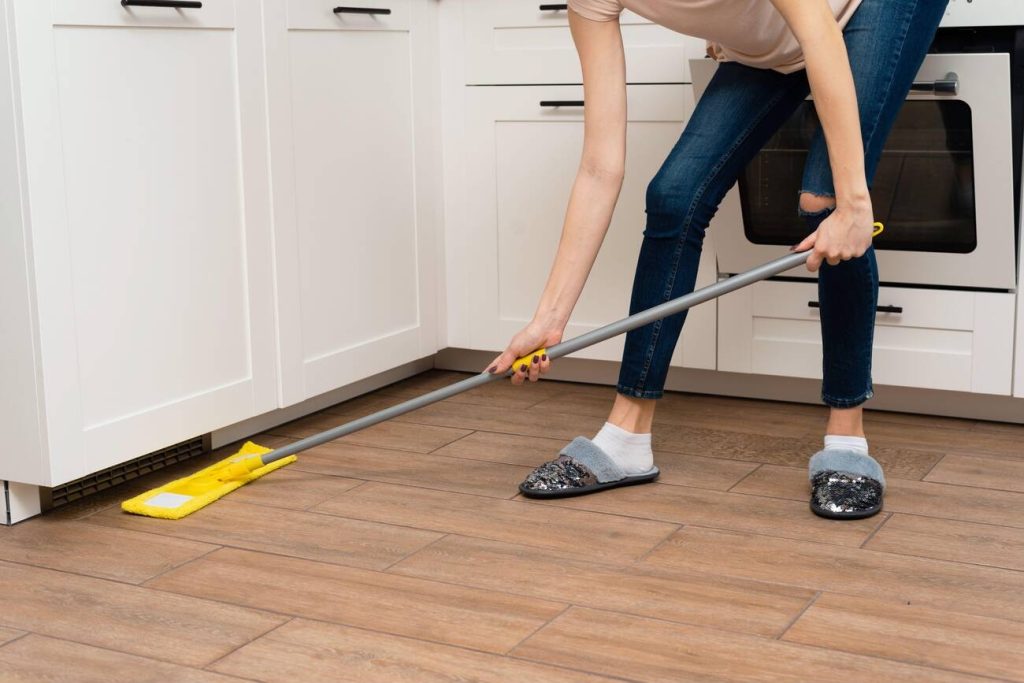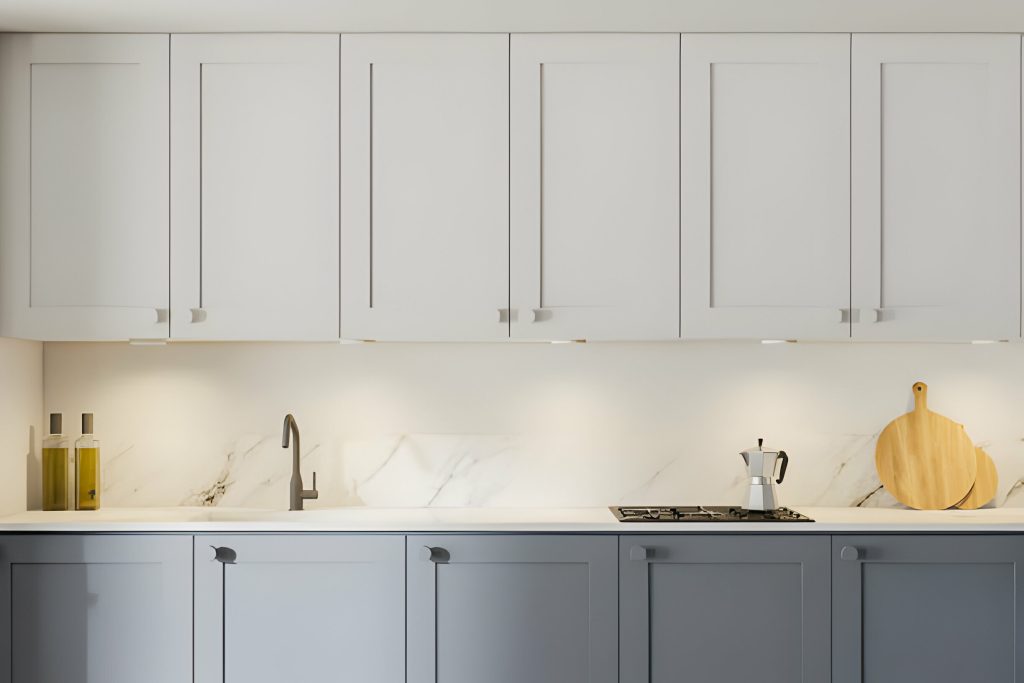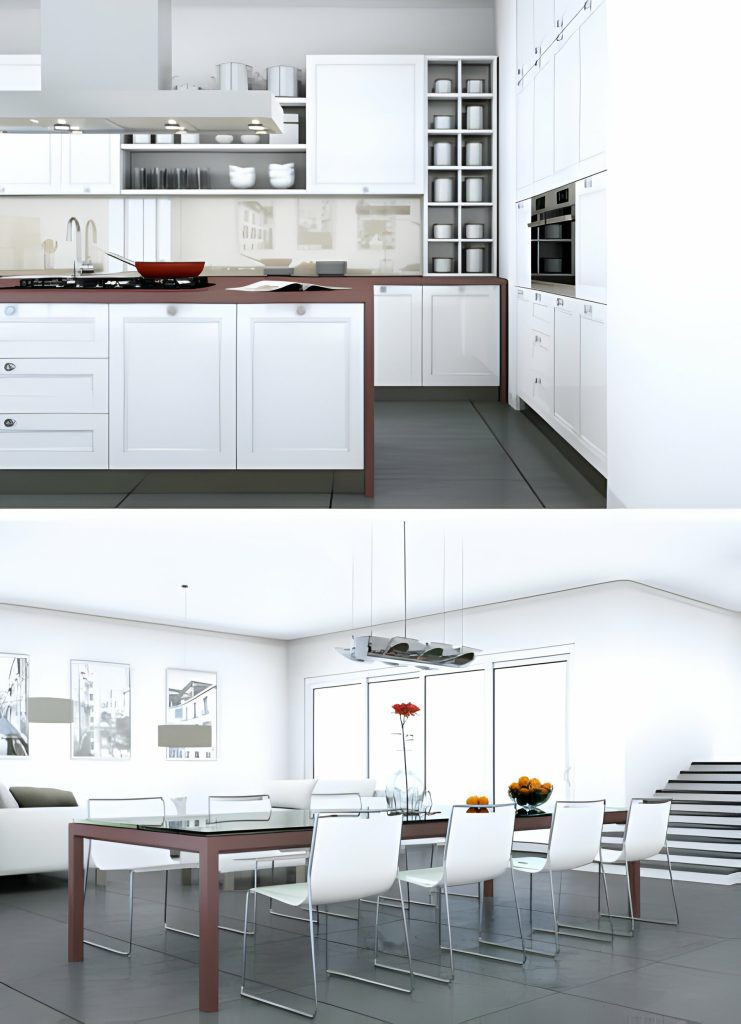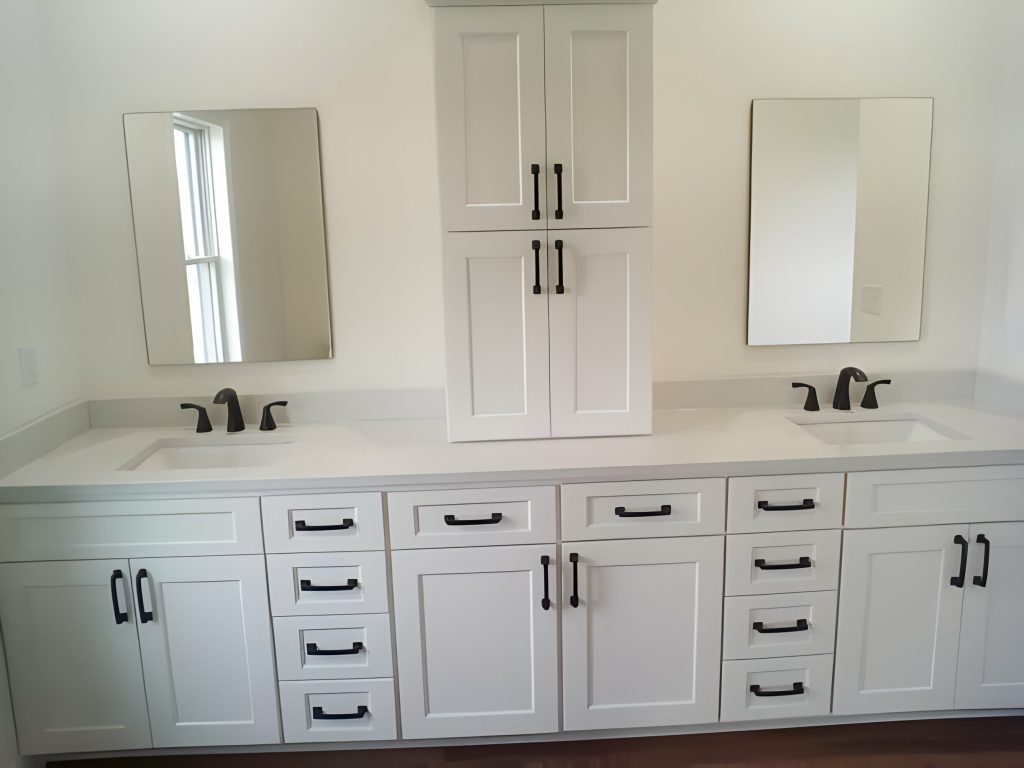You can breathe new life into them with a little restoration. In this article, we’ll show you how you can restore your laminate cabinets to their former glory. With some paint, sandpaper, and new hardware, you’ll be amazed at the transformation. Say goodbye to expensive replacements and say hello to stylish and budget-friendly results. So grab your tools and let’s get started on reviving those laminate cabinets!
The Benefits of Restoring Laminate Cabinets
You can save money and update the look of your laminate cabinets by restoring them with paint, sandpaper, and new hardware. Refinishing laminate cabinets has its pros and cons. The benefits include cost-effectiveness and the ability to achieve a stylish and new appearance without having to buy expensive new cabinets. The best techniques for restoring laminate cabinets involve proper preparation, such as cleaning the surfaces thoroughly and using a water-based primer for better adhesion. Before and after photos can showcase the transformation that can be achieved through cabinet restoration. To maintain the newly refinished cabinets, it is important to clean them regularly with mild soap and water, avoiding harsh chemicals that could damage the finish. Common mistakes in cabinet refinishing include skipping essential steps like sanding or not allowing enough drying time between coats of paint. By following these tips and techniques, you can successfully restore your laminate cabinets to enhance their appearance and extend their lifespan.
Understanding the Cabinet Refacing Process
The cabinet refacing process involves removing the existing doors and drawer fronts, sanding the cabinet boxes, applying a new finish, and installing upgraded hardware. To ensure a successful restoration of your laminate cabinets, proper preparation is key. Here are some important steps to follow:
- Proper preparation: Clean the cabinets thoroughly with warm water and disinfectant spray to remove any dirt or grease.
- Choosing the right primer: Select a water-based primer that is specifically designed for laminate surfaces. This will ensure better adhesion and durability.
- Techniques for applying paint: Use a foam roller to apply water-based paint in a V-pattern for an even coverage. Allow each coat to dry before applying the next one.
- Importance of drying time: Be patient and allow the paint to dry completely between coats and before reattaching the cabinets. This will prevent smudging or damage to the finish.
- Maintaining and cleaning refinished cabinets: To keep your refinished cabinets looking beautiful, regularly clean them with a mild soap solution and avoid using abrasive cleaners or scrub brushes.
The Cost of Professional Cabinet Refacing
Professional cabinet refacing typically costs between $5,000 and $15,000, depending on the size of your kitchen or bathroom and the number of cabinets you have. When comparing the cost of professional cabinet refacing to a DIY project, it’s important to consider durability factors and customization options. While DIY may seem like a more affordable option upfront, professional cabinet refacing ensures a high-quality and long-lasting result. Professionals have the expertise and tools to handle the refacing process effectively, giving you peace of mind. Additionally, professional cabinet refacing allows for customization based on your needs and preferences. In terms of time frame, the refacing process usually takes about a week when done by professionals. So if you’re looking for durability, customization options, and a faster turnaround time, professional cabinet refacing is worth considering.
DIY Vs Professional Cabinet Refacing: Pros and Cons
Consider the advantages and disadvantages of tackling cabinet refacing as a DIY project versus hiring a professional.
- Cost Considerations: DIY cabinet refacing may save you money upfront, as you won’t have to pay for labor costs. However, keep in mind that professionals often have access to discounted materials, so the overall cost might not be significantly different.
- Durability Factors: Professional cabinet refacing ensures a high-quality and long-lasting result. They have the expertise to properly prepare surfaces and apply finishes that will withstand everyday use and moisture in kitchens or bathrooms.
- Time Investment: Refacing cabinets can be time-consuming, particularly if you’re inexperienced. Hiring a professional can save you valuable time and ensure the job is completed efficiently.
- Expertise Required: Cabinet refacing requires specific skills, such as removing doors and drawer fronts without damaging them or applying finishes evenly. If you don’t possess these skills, it’s best to leave it to the professionals who have the necessary expertise.
When deciding between DIY cabinet refacing or hiring a professional, weigh these factors carefully to make an informed decision that suits your budget, timeline, and desired outcome.
Exploring Different Finish Options for Laminate Cabinets
When exploring different finish options for your laminate cabinets, it’s important to choose a durable option that will enhance their appearance and longevity. Laminate cabinets have many benefits, such as affordability and resistance to stains and scratches. There are various popular laminate cabinet finishes available, including wood grain, solid colors, and textured finishes. To maintain your laminate cabinets, avoid using abrasive cleaners and instead opt for mild soap and water. For creative ideas on updating your laminate cabinets, consider adding new hardware or applying a fresh coat of paint. However, keep in mind the pros and cons of painting laminate cabinets – while it can give them a new look, it may not be as durable as other finish options. Overall, selecting the right finish for your laminate cabinets can greatly improve their aesthetic appeal and extend their lifespan.
Signs That It’s Time to Replace Cabinets Instead
If your cabinets are severely damaged or warping, it may be time to replace them instead of refinishing. Here are some cabinet replacement considerations to keep in mind:
- Signs of cabinet damage: Look for cracks, warping, or water damage in your cabinets. If they’re beyond repair, replacement is a better option.
- Cabinet layout customization options: When you replace cabinets, you have the opportunity to customize the layout according to your needs. You can add more storage space or reconfigure the layout for better functionality.
- Cost comparison of cabinet replacement vs refacing: While cabinet replacement can be more expensive upfront, consider the long-term costs of refacing and potential repairs. Replacement may offer better value in the long run.
- Longevity of refaced cabinets: Refaced cabinets can last anywhere from 10-20 years with proper care and maintenance. However, if your cabinets are already damaged, replacing them will ensure longer-lasting results.
Consider these factors when deciding whether to replace or refinish your cabinets for a kitchen or bathroom remodel.
Is Refinishing Laminate Cabinets a Cost-Effective Solution
Refinishing laminate cabinets can be a cost-effective solution for updating your kitchen or bathroom. When it comes to cost-saving alternatives, refinishing is a great option. Not only does it save you money compared to replacing cabinets, but it also extends the longevity of your cabinets. With DIY refinishing techniques, you have the opportunity to transform your laminate cabinets with just a few supplies and some elbow grease. There are different paint options available specifically for laminate cabinets, allowing you to choose the perfect finish for your desired look. While professional refinishing may seem tempting, DIY allows you to save even more money and customize the process to your liking. So why not give refinishing a try and enjoy a fresh new look in your space without breaking the bank?
Essential Materials for Refinishing Laminate Cabinets
To successfully refinish your laminate cabinets, gather the essential materials such as sandpaper, disinfectant spray, drop cloths, water-based primer and paint, foam rollers, masking tape, and optional new handles for an updated look. Here are some cost-saving tips and common mistakes to avoid when refinishing your laminate cabinets:
- Alternative Refinishing Methods: Consider using a veneer or water-borne coating for a more durable finish that won’t chip or peel like laminate.
- Best Paint Colors: Choose neutral colors like white or gray for a timeless look that will match any decor.
- Finding Inspiration: Look online or in home improvement magazines for inspiration on different cabinet styles and finishes.
- Common Mistakes to Avoid: Make sure to properly clean and sand the cabinets before applying primer to ensure a smooth and long-lasting finish.
Step-by-Step Guide to Refinishing Laminate Cabinets
Start by removing the cabinet faces and labeling the hardware locations for easy reattachment later. Restoring laminate cabinets is a great way to give them a fresh new look without breaking the bank. With some refinishing techniques and a little bit of elbow grease, you can transform your outdated laminate cabinets into stylish pieces that will enhance your space. When refinishing laminate cabinets, it’s important to choose the right cabinet hardware to complement your new look. Whether you prefer sleek modern handles or classic knobs, there are plenty of options available to suit your style. If you’re looking for alternative cabinet upgrades, consider adding glass inserts or decorative trim to give your cabinets a unique touch. Common laminate cabinet issues like chipping or peeling can be addressed by using waterproof adhesive or replacing cracked sections. By following these steps and incorporating these tips, you’ll have beautifully restored laminate cabinets in no time.
Helpful Tips for Successful Cabinet Refinishing
When updating your cabinets, it’s important to thoroughly clean the surfaces for better primer adhesion and a consistent finish. To ensure successful cabinet refinishing, keep these tips in mind:
- Refinishing techniques: Use sandpaper to remove any existing finish and create a smooth surface for painting. Apply multiple coats of primer and paint for a durable and professional-looking result.
- Proper preparation: Clean the cabinets with warm water and disinfectant spray to remove grease, dirt, and grime. Sand the surfaces to promote better adhesion of the primer and paint.
- Choosing the right paint: Opt for water-based paints that are specifically formulated for cabinets. These paints offer durability, easy cleanup, and a wide range of color options.
- Updating hardware: Consider replacing old handles or knobs with new ones to give your cabinets a fresh look. It’s an affordable way to update their appearance without spending too much.



